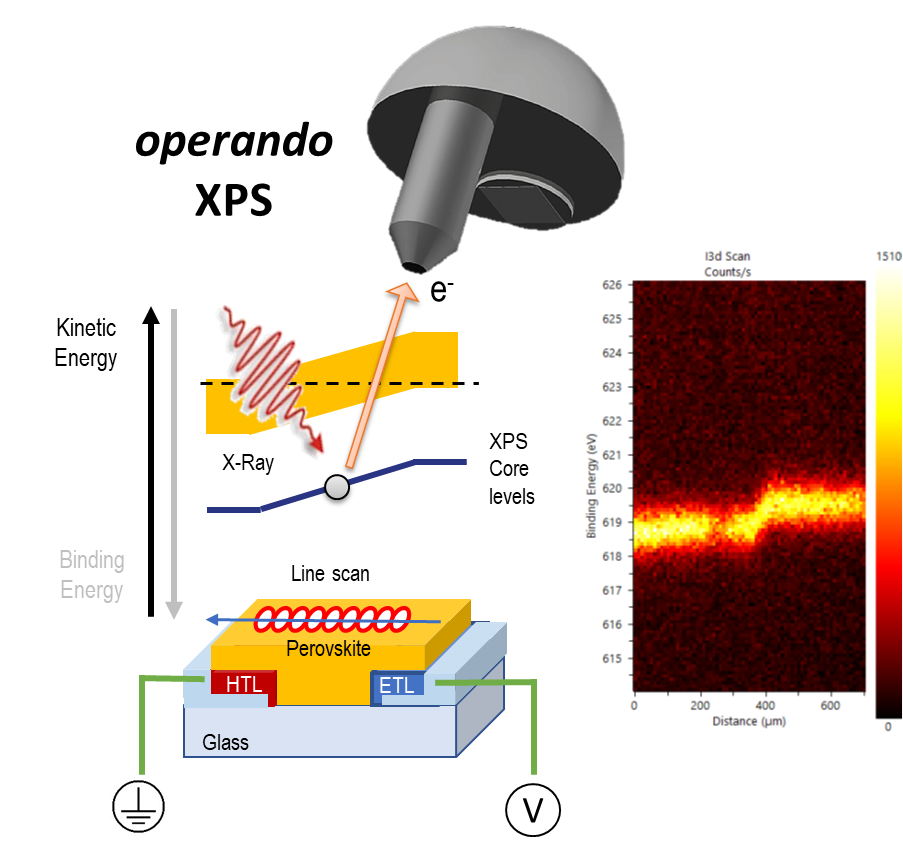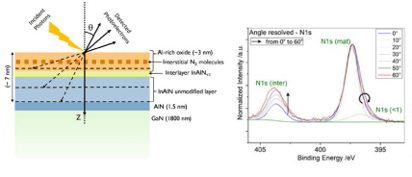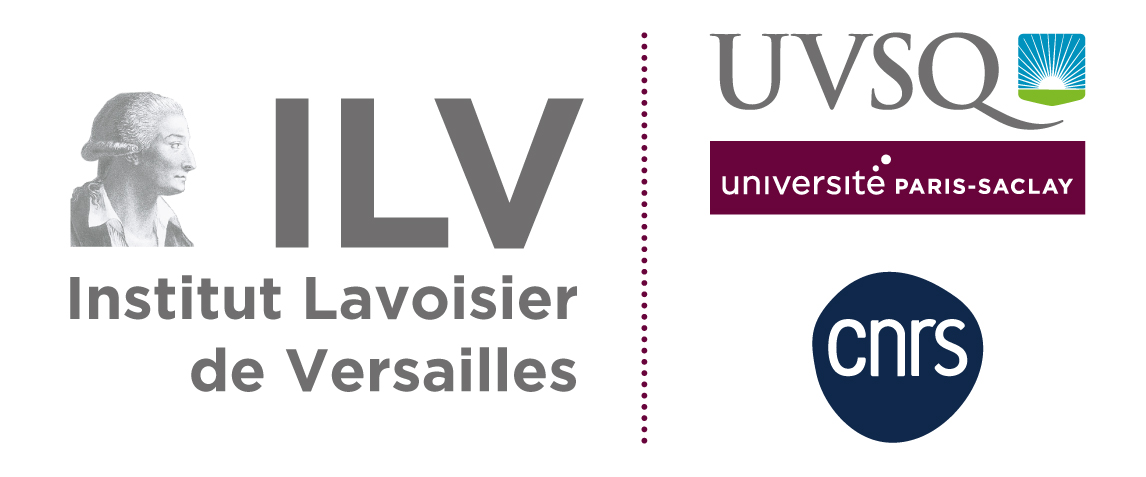You are here : ILVENResearch TeamsEPIInterfaces and methodologies
- Partager cette page :
- PDF version
Interfaces and methodologies
Electrochemistry
To identify the mechanisms at semiconductor/electrolyte and metal/electrolyte interfaces, advanced electrochemical techniques are used such as (photo)voltammetry, electrochemical impedance (fixed frequency and multi-frequency), quartz microbalance and electro(photo)luminescence.
Recent publications
XPS Operando

We develop a research activity around the chemical characterization of surfaces under electrical or optical stimulation. These operando XPS experiments initially focused on electrochromic glasses (application of a potential difference to modify the transmission of the glass) were extended to solar cells (heterolateral junctions) under polarization or illumination (white light, laser). This methodology can be applied to any type of optoelectronic devices provided that contain suitable contacts and geometry. These studies provide a better understanding of the reaction mechanisms taking place on the surface and interface of various objects (ionic migration, change in oxidation states).
Recent publications
Multi scale
 m its numerous academic and industrial collaborations. The complementarity of the information obtained makes it possible to respond precisely to the various fundamental or applied issues encountered.
m its numerous academic and industrial collaborations. The complementarity of the information obtained makes it possible to respond precisely to the various fundamental or applied issues encountered.
Recent publications
Burried interfaces

The chemistry of the interfaces plays a fundamental role in the properties of the devices (performance, stability, failure, etc.). One of the challenges lies in accessing buried interfaces without modifying the initial information. The team uses different strategies: sequential ionic abrasion and angular analysis for photoemission analyses, direct access in transverse section for localized analysis by Auger or by microscopy. An innovative methodology coupling GD-OES and XPS is also used in the case of deeply buried interfaces (IPVF partnership).






